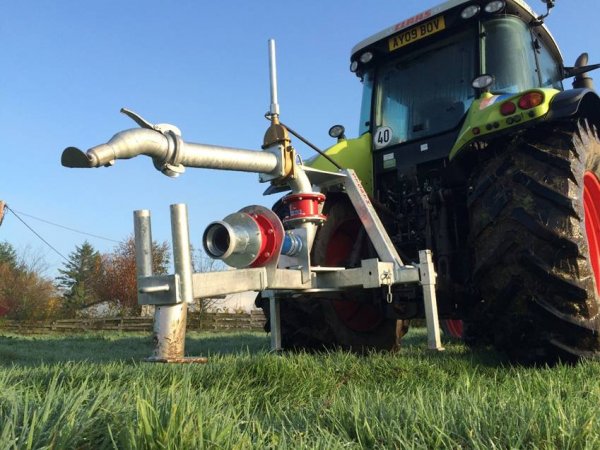
Spreader Bars
Designed to provide the simplest method of slurry application, Storth Spreader Bars are available in spread widths of 10m (Single Outlet) up to 12m (Twin Outlet). With accurate adjustment, the bars provide low level spread patterns with large droplets ensuring even distribution of slurry and reduced drift, minimising environmental odour nuisance.
Built of high quality materials, Storth Spreader Bars are galvanised as standard to help meet the most demanding of operating environments. The range offers machines to suit either farmer or contractor whatever your reeler or spread width preference requirements.
Storth provide two models of Single Spreader Bar, the “Farmer” and “Contractor”.
Heavy Duty 3-point linkage, adjustable alloy spread plate and single hydraulic slurry gates come as standard, the latter enabling control of slurry application from the tractor seat.
Pivoting hose mounting swing arms (Farmer 165°, Contractor 180°) give complete flexibility during headland turning and the optional 360° hose joint offers the ability to negate hose twist.
The Farmer model incorporates Lay Flat Hose as a means of equipment slurry transportation where the Contractor uses galvanised solid tube connection complete with 360° joint.
Additional features on the Contractor include Lay Flat Hose drag eye and hook leg to assist with in field hose management.

Built to the same high specifications as the Single Spreaders, three robust models are available in the twin spreader range “Farmer”, “Combi” and “Contractor”.
Vertical fold transportation arms, alloy spread plates and 180° pivoting hose mounting swing arm come as standard.
A close coupled reeler and piggy-back facility is offered by the Farmer (Bobbin Reelers) and Combi (Mounted Reelers) models, simply add the optional A-frames. The Contractor has been specifically engineered with Trailed Reelers in mind.
Complete operator control is offered by the Combi and Contractor which are fitted with twin slurry gate valves enabling independent side shut off for operation in butts and tight spots. Using this facility in conjunction with individual left or right fold provides a useful unblocking resource when operating with extremely fibrous material.







